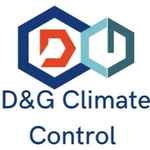iBoost with Ecodan ASHP - Information Needed
@derek-m Nah, not the Earth revolving … the Sun goes around us on Earth! Also be careful you don’t fall off the edge!
Toodles, heats his home with cold draughts and cooks food with magnets.
@editor
That’s an interesting read, thank you. Having read it I feel that an iBoost with an ASHP might not be as effective as I might have hoped. I shall carry on researching and see where I get to.
Retrofitted 11.2kw Mitsubishi Ecodan to new radiators commissioned November 2021.
14 x 500w Monocrystalline solar panels.
2 ESS Smile G3 10.1 batteries.
ESS Smile G3 5kw inverter.
14x 500w solar panels. 2x 5.7kw battery storage (Should and will be 2x 10.1kw battery storage). 1x 5kw Hybrid inverter.
Retrofitted 11.2kw Mitsubishi Ecodan to new radiators commissioned November 2021.
14 x 500w Monocrystalline solar panels.
2 ESS Smile G3 10.1 batteries.
ESS Smile G3 5kw inverter.
One way to think about this is to consider 'whats the best/easiest way to self consume as much as possible'. The iboost has no minimum power requirement so has an advantage over almost anything else when the excess of PV output over house consumption is low as it will 'mop up' the difference . This is something of a unique feature which nothing else has and means that, unlike the hp, your iboost can heat water for free 'low and slow' which the hpcannot do. At times of medium solar output that might be what you want.
With that in mind one simple possible strategy is to decide a min pv output (or excess PV output) at which to switch on the hp and have the iboost do it's thing ''in parallel'.
Although not directly equivalent I recently started doing something similar with car charging. So basically I switch on the (2.4kW) car charger when I am otherwise exporting 1.2kW or more, and switch it off when I'm importing 1.2kW or more. I check every 5 mins and it's automated in home assistant. Meanwhile my pv diverter (to dhw) just does what it does working around the car charging which it just sees as a house load. The effect overall is that most of my dhw heating occurs during the shoulder pv output periods or, at this time of year, where the PV output exceeds the 2.4kW taken by the car, and the house total is zero for much more of the day than prior to introducing this algorithm. It's quite gratifying to see the graph of house power consumption substantially levelled out when the car is plugged in, showing the algorithm is working.
You would need a sonewhat different algorithm for dhw, and you wouldn't want to switch more frequently than perhaps every 10-30 mins, but similar principles could be used. You would need to think about how to factor the cop advantage of the hp into the trigger levels -basically you would bias the decision in favour of the hp even when the result was some energy import, but not so much that most of the energy was imported even though there is some pv available which the iboost could otherwise be using in low and slow mode.
Obviously you can attempt to make it very sophisticated trying to assess cloud cover variability and predicted weather, but perhaps a simple start is the way to go intiially, then tweak it as your experience of the system evolves
4kW peak of solar PV since 2011; EV and a 1930s house which has been partially renovated to improve its efficiency. 7kW Vaillant heat pump.
I very much appreciate your help. However, having now read your post several times, I still have absolutely no idea what you are saying.
No entiendo. 🤣
Retrofitted 11.2kw Mitsubishi Ecodan to new radiators commissioned November 2021.
14 x 500w Monocrystalline solar panels.
2 ESS Smile G3 10.1 batteries.
ESS Smile G3 5kw inverter.
Posted by: @morganI very much appreciate your help. However, having now read your post several times, I still have absolutely no idea what you are saying.
No entiendo. 🤣
OK I will try to keep it simple.
In one of your posts you say you have excess which you export (even though you have batteries).
The first question to ask is, are you only exporting when both your hot water tank and your batteries are full (hot water tank full of hot water). If this is the only time you export then you there is not much else you can do except get a bigger hot water tank or more batteries.
If you are exporting even though the batteries still have capacity, then first ask why the battery controller isn't dumping the excess to the batteries
If you are exporting even though the hot water tank is not full (but the batteries are full) then there may be a use for the iboost because of its unique feature that it can alter its output to match the available excess capacity (which nothing else can). I will explain further below.
If you have reached this point then you have storage capacity in the hot water tank that is not being used, plus spare capacity. So the question becomes how best to use the spare capacity.
The two options are the heat pump or the iboost. The heat pump will give better efficiency because for every kWh you divert to it, it will produce 4kWh. However you have two issues
- How to control the heat pump to switch it on and off according to the available excess (not too often because that would be bad both for efficiency and the Heat Pump itself
- The variable nature of the excess (because eg of clouds) -> if the heat pump demands more than the excess, then you will import whcih presumably you dont want to do
It may be that the battery controller can be persuaded to 'make up the difference' in (2), again it presumably depends on how the controller is set up.
The really nice thing about the iboost, however, is that deals with both 1 & 2 automatically, seamlessly adjusting its output precisely to match the excess. Its just plug and play.
Hope thats clearer.
4kW peak of solar PV since 2011; EV and a 1930s house which has been partially renovated to improve its efficiency. 7kW Vaillant heat pump.
- 26 Forums
- 2,357 Topics
- 53.5 K Posts
- 163 Online
- 6,025 Members
Join Us!
Worth Watching
Latest Posts
-

RE: Setback savings - fact or fiction?
I could, but I think we can do better, by plotting hour...
By cathodeRay , 12 hours ago
-
RE: Midea ASHP – how to set weather compensation
Just one more thought. If you have convenient space fo...
By JamesPa , 13 hours ago
-
RE: Advice on internal circulation pump noise
Extend the primary branch and make sure you have more t...
By ASHP-BOBBA , 14 hours ago
-

RE: External pipework insulation
Oh Dear! that's appalling pipe work, should've been in ...
By dgclimatecontrol , 19 hours ago
-

RE: Jokes and fun posts about heat pumps and renewables
By Morgan , 20 hours ago
-

RE: Controlling Daikin Altherma via P1P2 and Home Assistant
On the contrary, @toodles, that’s a lot of help. I’d ne...
By Majordennisbloodnok , 22 hours ago
-
RE: Octopus Cosy Heat Pump Owners & Discussion Thread
@kevh with the Cosy 6 I know it definitely goes to arou...
By HarrisonC , 1 day ago
-

Parsnip, Bacon & Coconut Milk Soup
First let me say, I am only a cook because I am human a...
By Toodles , 1 day ago
-
RE: Electricity price predictions
Ben Watts posted on LinkedIn that he had updated this w...
By Judith , 2 days ago
-

RE: The good, the bad and the not that great – my heat pump installation
Small update, Emailed and Spoke to Midea UK and they ...
By Burtis , 2 days ago
-
RE: Solis S6-EH1P8K-L-PLUS – Why I Chose It and What I’ve Learned So Far
@bash Octopus does charge for the admin. The process al...
By Batpred , 2 days ago
-
RE: New Fogstar 15.5kWh upright solution
Issues still under investigation by Solis... Fogstar ...
By Batpred , 2 days ago
-
RE: Who's your electricity provider and what's your tariff?
I agree, the consumer is not being properly represented...
By Batpred , 2 days ago
-

RE: Heat Pump Heats the House… But It’s Not Cosy. Emitter Changes or System Tweak?
@toodles interesting suggestion, thanks. I will try to...
By GrahamF , 2 days ago
-
RE: Mitsubishi Ecodan Auto Adaption trial to stop cycling.
The interval you talk of, i think, will be 60min for an...
By F1p , 3 days ago
-
Agree with @majordennisbloodnok on the setbacks. We hav...
By ChandyKris , 3 days ago
-

RE: Speedcomfort radiator fans
@deltona the way the links were added broke the page. A...
By Mars , 3 days ago
-

RE: Refrigerant R32, is it now banned in the EU from 1st Jan 2027 for monobloc ASHPs?
This has been delayed from what I believe to be this ye...
By dgclimatecontrol , 4 days ago





